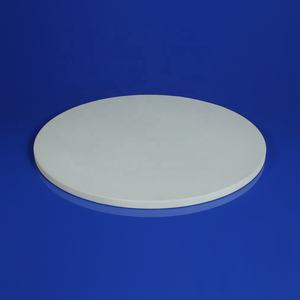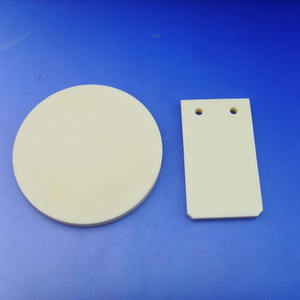1. Product Composition and Ceramic Processing of Alumina Pots And Pans
1.1 From Bauxite to Dense Porcelain: The Production Journey
(Alumina Ceramic Baking Dish)
Alumina ceramic cooking meals are fabricated from aluminum oxide (Al two O THREE), a synthetic ceramic substance derived mainly from bauxite ore via the Bayer process.
The raw alumina powder, generally 90– 99.5% pure, goes through milling to attain a great particle dimension distribution, which is essential for uniform densification throughout creating and sintering.
To shape the baking meal, the powder is mixed with binders and plasticizers, then developed making use of strategies such as slip spreading, uniaxial pressing, or isostatic pressing to develop a “green” body with the desired geometry.
After creating, the green body is dried out and terminated in a high-temperature kiln at temperature levels in between 1400 ° C and 1600 ° C in an oxidizing ambience.
This sintering process drives off natural ingredients and causes atomic diffusion, resulting in a thick, polycrystalline microstructure with minimal porosity– generally less than 2%.
The end product is a completely consolidated ceramic with high mechanical stamina, chemical inertness, and remarkable thermal stability, making it suitable for repetitive direct exposure to oven environments.
1.2 Microstructural Attributes and Phase Pureness
The efficiency of alumina baking recipes is very closely tied to their microstructure, which includes randomly oriented Al â‚‚ O four grains ranging from 1 to 10 micrometers in size.
Higher-purity formulations (e.g., 99% Al ₂ O ₃) exhibit greater thermal shock resistance and chemical resilience, while lower-purity grades may include second phases such as mullite or lustrous grain border stages that can decrease mechanical stamina at raised temperature levels.
Makers often optimize grain size and circulation to balance sturdiness and thermal conductivity, making sure the meal can hold up against fast temperature level modifications without splitting.
Unlike polished porcelains or porcelain, high-grade alumina cooking dishes are totally dense and non-porous, getting rid of the risk of liquid absorption and microbial development– a significant benefit for food safety and security and lasting health.
This intrinsic impermeability likewise avoids flavor transfer between various foods, making alumina suitable for versatile kitchen area use.
2. Thermal and Mechanical Behavior in Food Preparation Environments
2.1 Thermal Conductivity, Retention, and Uniform Home heating
Alumina ceramics have moderate thermal conductivity– around 20– 30 W/m · K– greater than most glass or porcelain kitchenware yet less than steels like aluminum or copper.
This property allows steady and even warmth circulation throughout the dish, decreasing locations that can bring about irregular food preparation or scorching.
( Alumina Ceramic Baking Dish)
Once warmed, alumina exhibits outstanding thermal retention as a result of its high heat ability, enabling food to remain warm for prolonged durations after removal from the oven.
This characteristic is specifically useful for serving recipes, covered dishes, and slow-cooked dishes where constant temperature level is vital for structure and taste advancement.
Additionally, alumina can endure continuous use at temperatures approximately 1500 ° C in commercial setups, though regular kitchen area ovens run listed below 300 ° C, positioning minimal stress and anxiety on the material.
Its capability to endure repeated thermal cycling– such as moving from freezer to oven or oven to countertop– without degradation makes it a sturdy option for contemporary culinary applications.
2.2 Mechanical Stamina and Longevity Under Daily Use
Despite being a brittle ceramic, high-density alumina offers superior solidity (Mohs solidity of 9, 2nd only to ruby and cubic boron nitride), making it very resistant to scratching, abrasion, and surface wear.
This resistance ensures that the cooking surface continues to be smooth and non-reactive in time, avoiding food deposit build-up and helping with very easy cleaning.
While alumina recipes are not immune to effect fracture– specifically if dropped on difficult surfaces– they are significantly more durable than traditional earthenware or stoneware because of their fine-grained, low-porosity framework.
Lots of industrial alumina cooking recipes are developed with thick wall surfaces and reinforced edges to enhance architectural integrity and lower breaking risks.
Additionally, their chemical inertness makes certain no leaching of metallic ions or polish parts right into food, even under acidic or alkaline cooking problems, conference rigid food call safety requirements.
3. Useful Advantages Over Conventional Kitchenware Materials
3.1 Comparison with Glass, Metal, and Enameled Steel
Contrasted to borosilicate glass (e.g., Pyrex), alumina porcelains use exceptional thermal shock resistance and mechanical stamina, reducing the likelihood of unexpected crack during temperature transitions.
Unlike metal baking trays, which can militarize Maillard reactions exceedingly or respond with acidic active ingredients, alumina gives a neutral, non-catalytic surface that protects food chemistry.
Enameled steel cooking equipment, while sturdy, can reveal underlying steel if broken, leading to corrosion and contamination; alumina, being fully uniform, does not suffer from such delamination risks.
Furthermore, alumina’s non-porous nature gets rid of the need for flavoring or oiling, unlike cast iron, and stays clear of the possibility for bacterial emigration in microcracks.
These practical benefits setting alumina as a hygienic, long-lasting, and performance-oriented choice in both residential and professional kitchen areas.
3.2 Microwave, Stove, and Fridge Freezer Compatibility
Alumina ceramic cooking recipes are completely compatible with standard stoves, convection ovens, broilers, and fridges freezer, allowing seamless shifts from storage to food preparation to serving.
They are also microwave-safe, as alumina is clear to microwave radiation and does not generate eddy currents or arcing like metallic cookware.
However, individuals need to make sure that no metallic paints or trims exist on attractive variants, as these can create sparking.
The product’s stability across a vast temperature level range– from ice-cold fridge freezer conditions to high-heat broiling– makes it optimal for preparing meals that need cooling prior to baking or completing under a grill.
This flexibility supports contemporary food preparation techniques such as sous-vide adhered to by burning, or make-ahead dishes that are frozen and reheated without container transfer.
4. Applications, Sustainability, and Future Dope
4.1 Culinary Makes Use Of and Industrial-Scale Food Preparation
Alumina ceramic baking recipes are commonly used for toasting veggies, cooking covered dishes, preparing gratins, and offering directly at the table because of their visual allure and warmth retention.
In business kitchens, their longevity and resistance to thermal fatigue make them cost-effective in time despite a greater first cost compared to disposable light weight aluminum trays.
They are additionally used in food processing research laboratories and pilot plants for regulated thermal experiments, where product pureness and dimensional stability are critical.
Their inertness ensures that speculative outcomes are not skewed by container interactions, a crucial consider dish growth and sensory screening.
4.2 Environmental Effect and Product Innovation
From a sustainability point of view, alumina ceramics have a high personified power because of sintering at severe temperature levels, however their durability offsets this through decreased substitute regularity and waste generation.
Unlike single-use light weight aluminum foil or plastic containers, a single alumina dish can last decades with appropriate treatment, contributing to circular economic situation principles in house items.
Continuous research concentrates on boosting strength through composite formulas– such as incorporating zirconia or silicon carbide micro-inclusions– and establishing energy-efficient sintering methods like microwave or spark plasma sintering for greener production.
Furthermore, advancements in additive manufacturing may quickly allow tailored, complex-shaped alumina kitchenware with incorporated thermal management functions.
To conclude, alumina ceramic baking dishes represent a convergence of sophisticated materials science and useful kitchen performance.
Their phenomenal thermal security, mechanical resilience, chemical inertness, and multi-environment compatibility make them above several conventional pots and pans materials.
As customer demand expands for safe, sustainable, and high-performance cookware, alumina ceramics are poised to play a progressively main role in modern-day cooking methods.
5. Supplier
Alumina Technology Co., Ltd focus on the research and development, production and sales of aluminum oxide powder, aluminum oxide products, aluminum oxide crucible, etc., serving the electronics, ceramics, chemical and other industries. Since its establishment in 2005, the company has been committed to providing customers with the best products and services. If you are looking for high quality alumina c, please feel free to contact us.
Tags: Alumina Ceramic Baking Dish, Alumina Ceramics, alumina
All articles and pictures are from the Internet. If there are any copyright issues, please contact us in time to delete.
Inquiry us

